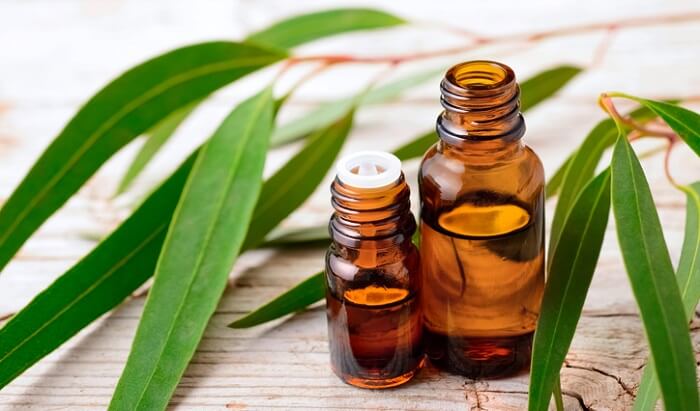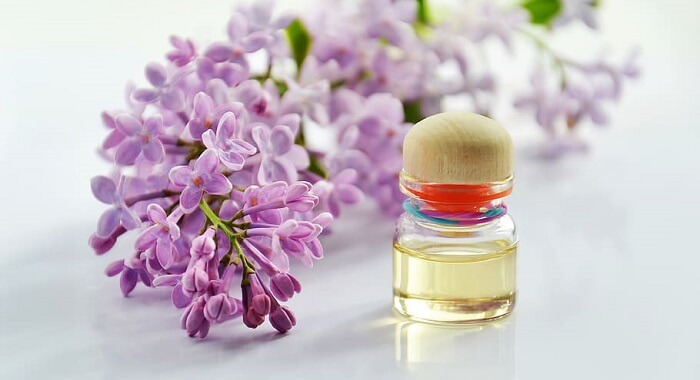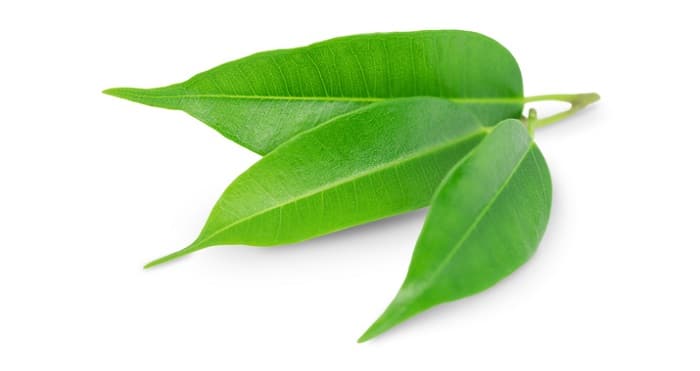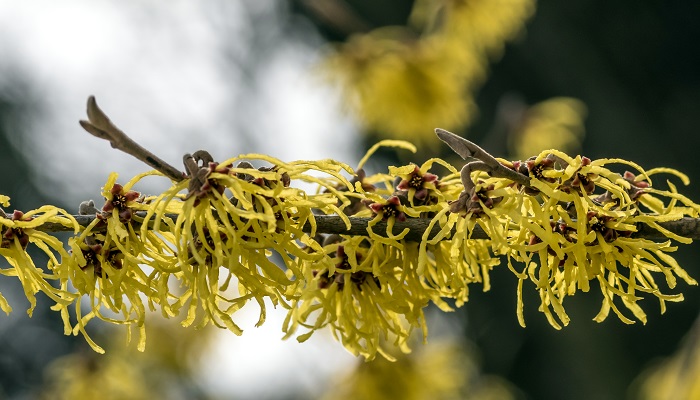Having healthy-looking skin helps us feel confident and beautiful. One of the ways this can be achieved is with the help of skin tightening: such as from skin toners and other products.
It can be hard to determine which skincare products are best to choose for your skin— especially because the market is riddled with both expensive and non-natural options. Thankfully, essential oils provide a natural option that can be both affordable and effective.
Can essential oils help with skin tightening?
Products like skin toners and tighteners are known to contain natural plant ingredients—including herbs found in essential oil form. These same essential oils can be used at home to make basic toners for helping tighten skin for various skincare purposes: such as fighting acne, reducing pores, balancing skin oiliness, fighting the effects of aging, or restoring a youthful look.
Herbs and essential oils that support tighter skin contain astringent plant compounds called “tannins.” These acidic phytochemicals bind to the proteins and tissues in human skin, causing them to tighten or even draw (or push) out excess moisture or oils, which is described as an “astringent” effect. These tannins can also help support issues related to weepy poison oak or poison ivy rashes, or even mosquito, bee, or wasp stings because of their tightening and “drawing” action.1
For the purpose of skincare, essential oils containing these tannins can be exceptional home remedies for generally tightening skin or restoring overall skin balance and pH— though they are not ideal for people with dry skin. For those with sallow or oily skin, however, these types of essential oils can be excellent skin remedies when used correctly.
How to use essential oils for skin tightening

To use any of the below essential oils as a skin tightener or toner, dilute 1-2 drops in a carrier oil. Apply topically to areas of skin that need tightening or balancing with clean fingertips.
Mix essential oil toner with your favorite routine face wash product if desired. For the best skin tightening benefits or to amplify the skin tightening benefit, use this toner following use of your favorite face wash.
Note: before using any single essential oil or essential oil blend, be sure to check for skin allergies or reactions with a skin patch test. Different herbs or flower oils can cause different reactions in different people.
A test can be done by adding a drop of diluted essential oil to your skin and waiting 5 or 15 minutes for any skin reaction. If none happens, you are safe to use the oil. However, if you experience raised skin, hives, itchiness, or trouble breathing with any specific essential oil type, this could be a sign you are allergic. Avoid using that oil and favor another choice that you don’t have a reaction to.
1. Calendula
This bright yellow flower has long been associated with skincare by herbalists and skincare companies alike. It is frequently featured as a favored natural ingredient in many skincare products for cleansing and tightening of skin. In essential oil form, it can make a great ingredient on its own or in a skin tightening toner blend.
Research shows that calendula essential oil can indeed support skin firmness and elasticity. As a highly sought-out herbal skincare ingredient, calendula is also shown to cleanse skin as an antimicrobial (helpful against acne) and also has a mild hydrating effect—perfect for balancing skin and for more balanced skin types.2
2. Eucalyptus
Eucalyptus is another astringent herb featured prominently in skincare products. Much like calendula, it is added for both cleansing and elasticity-promoting purposes. Studies show that the leaves and other parts of this Australian tree are rich in tannins—confirming that eucalyptus can indeed be used as a skin tightening herb in essential oil form, for both rejuvenation and supporting skin issues.3
Eucalyptus may have stronger skin-tightening properties than calendula, making it better suited for oily skin types. Eucalyptus essential oil is also famously antimicrobial. This means it can help with skin issues related to acne or even mild infections.
3. Lavender

This purple flower’s gentle cleansing properties and heavenly scent have made it just as popular as calendula or eucalyptus in skincare products—if not more so. Research shows that it also contains tannins that can gently tighten and support more youthful, balanced skin, and is probably better suited for more balanced or dry skin types.4
A skin tightening toner made with lavender essential oil will also have some gentle cleansing action, as the purple flower also has antimicrobial properties. It also contains antioxidants that can help support more youthful skin and may fight the effects of aging (such as wrinkles).
4. Oak
Of all herbs and essential oils that support astringent or skin-tightening action, oak essential oil may have the strongest action and is supported by the most research. This tree essential oil is best suited for highly oily or sallow skin types that need a lot more balance or drying effect.
Research confirms that oak is incredibly rich in astringent tannins. One study that explored a species of oak for cosmetic use showed that it also contained antioxidant flavonoids. These could support oak essential oil in helping skin retain a youthful look while fighting the effects of aging.5
5. Sage
Garden sage makes for an incredible culinary seasoning. It could also be an excellent skincare ingredient due to its astringent nature and tannin content, especially in essential oil form.
Research shows that sage contains tannins that can have astringent action on skin, thus bringing an elasticity-promoting effect for balancing and promoting skin youthfulness. It is also rich in antioxidant flavonoids that can support the skin’s ability to fight the natural effects of aging and fight free radicals.6
6. Tea tree

Tea tree has long been used as a powerful skincare agent. The essential oil, too, from this Australian bush can be used as a simple toner at home for both tightening and cleansing skin. For those with oily skin, tea tree may be a better choice to achieve better skin elasticity and skin type balance.
Tea tree essential oil is best known for cleansing and antimicrobial properties which are shown through scientific research. This can help fight skin issues and acne, while the tannins it contains can also support tighter, healthier, and more youthful-looking skin.7
7. Rose
Rose, and especially rose water, has been a beloved natural skin remedy for ages, even in the modern skincare industry. This is because rose has both very gentle astringent and hydrating properties—perfect for restoring tone and suppleness to balanced skin types.
In essential oil form, rose could provide the same benefits when used as an at-home skin tightening toner. Research confirms that it has a low number of tannins that can support better skin elasticity.8 It is also lauded in the skincare industry for skin hydration, reducing wrinkles, fighting acne, and more.9
8. Violet
Oils from the violet flower are known to be very gentle, balancing, and stabilizing for a wide range of skin types—much like rose essential oil. Also a popular ingredient in the skincare industry, violet essential oil is a great choice for a simple at-home skin-tightening natural toner.
Research shows that violet contains a low level of tannins, making the flower a great option for gentle skin-tightening support in those with balanced skin types.10 It’s also shown to be very supportive of skin problems like eczema, acne, or general dry and itchy skin.
9. Witch hazel

No other natural remedy is more well-known than witch hazel for its tannins, astringent properties, and for both skincare and skin tightening. It’s even a popular skincare product widely available at most stores.
Witch hazel essential oil can also be useful for the same purposes. Scientific research confirms that it is very high in tannins, which can be especially useful in toners for skin types that struggle with oiliness, sallow skin, or loose skin and wrinkles. It’s also widely used to help balance acne-prone skin.11
Essential oil blends for tighter skin
Essential oils for skin tightening can be even more effective when combined. Below are 3 blends I recommend for different skin types.
Cleansing skin tightening blend – For all skin types
Combine equal parts tea tree essential oil, lavender essential oil, and eucalyptus essential oil and dilute in a carrier oil when creating your natural home remedy toner. Use for skin tightening and/or acne issues.
Gentle skin-tightening blend – For balanced and dry skin types
Combine equal parts rose essential oil, violet essential oil, and calendula essential oil and dilute in a carrier oil when creating your natural home remedy toner. Use for skin tightening if you have normal or “balanced” skin, or for more gentle and hydrating effects if your skin is on the dry side.
Enhanced skin tightening blend – For oily or sallow skin types
Combine equal parts oak essential oil, witch hazel essential oil, and sage essential oil and dilute in a carrier oil when creating your natural home remedy toner. Use for skin tightening if your skin is particularly oily or aged.
Other natural methods for tighter skin
Besides the best essential oils for skin tightening, what other natural remedies can help achieve that supple and youthful look? Here are some suggestions:
- Aloe vera
- Raw honey
- Coconut oil
- Olive oil
- Coffee ground scrub
- Egg whites
- Almond oil
Having tighter, more youthful, and wrinkle-free skin doesn’t require expensive or chemical-laden skincare products. It can easily be done with completely natural, pure essential oils safely, and right at home. More often than not, these essential oils make up some of the best ingredients in these pricey skincare products anyway. Why not turn to nature at its source?
 About Adrian White
About Adrian White
Adrian White is a certified herbalist, organic farmer, and health, food, and agriculture freelance writer—and upcoming author. She is a past contributor to Healthline with bylines in The Guardian, Civil Eats, and Good Housekeeping. Adrian is also the co-owner and operator of Jupiter Ridge LLC, an organic farm growing diverse vegetables, mushrooms and herbs.
Sources:
1. “Tannins.” US Forest Service. Fs.usda.gov.
2. Akhtar, N., S. Uz Zaman, et. al. “Calendula Extract: Effects on Mechanical Parameters of Human Skin.” Acta Poloniae Pharmaceutica – Drug Research 68, No. 5. (2010): 693-701.
3. Fraga-Corral, M., P. Garcia-Oliveira, et. al. “Technological Application of Tannin-Based Extracts.” Molecules 3, no. 25. (2020): 614.
4. Costea, T., A.M. Strainu, & C.E. Gird. “Botanical Characterization, Chemical Composition and Antioxidant Activity of Romanian Lavender (Lavandula Angustifolia Mill.) Flowers.” Studia Universitatis “Vasile Goldis”, Seria Stintele Vietii 4, no. 29 (2019): 159-167.
5. Plainfosse, H., P. Burger, et. al. “Development of a Natural Anti-Age Ingredient Based on Quercus pubescens Willd. Leaves Extract—A Case Study.” Cosmetics 1, no. 5 (2018): 15.
6. Khiya, Z., Y. Oualcadi, et. al. “Correlation of Total Polyphenolic Content with Antioxidant Activity of Hydromethanolic Extra and Their Fractions of the Salvia officinalis Leaves from Different Regions of Morocco.” Journal of Chemistry (2021).
7. Ebrahim, H.Y., M. S. Mady, et. al. “Melaleuca rugulosa (Link) Craven Tannins: Appraisal of anti-inflammatory, radical scavenging activities, and molecular modeling studies.” Journal of Ethnopharmacology 298 (2022): 115596.
8. Mileva, M., Y. Ilieva, et. al. “Rose Fowers—A Delicate Perfume or a Natural Healer?” Biomolecules 1, no. 11 (2021): 127.
9. Yasmeen, A., S.S. Jamil, et. al. “Rosa Damascene Mill. (Rose): A versatile herb in cosmetology.” CELLMED 4, no. 9 (2019): 2.1-2.4.
10. Khorsand, A., R. Salari, et. al. “The effect of massage and topical violet oil on the severity of pruritus and dry skin in hemodialysis patients: A randomized controlled trial.” Complementary Therapies in Medicine 45 (2019): 248-253.
11. Ozan, I.I., & S.B. Akca. “Healing Tree: Common Witch Hazel (Hamamelis Virginiana).” International Congress on Medicinal and Aromatic Plants (2017): 384-390.